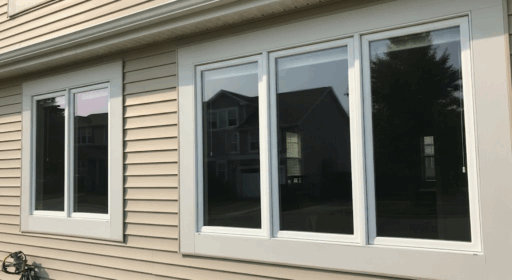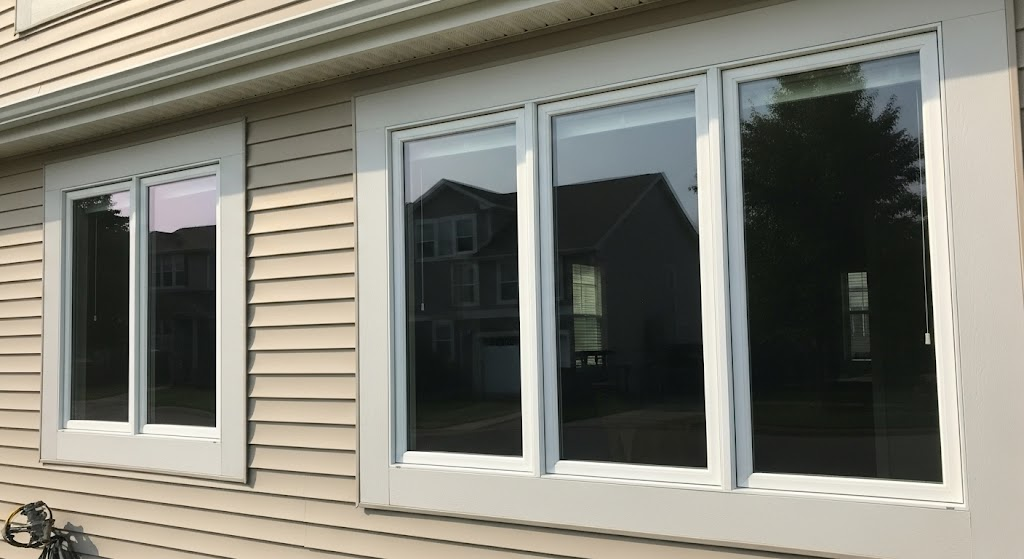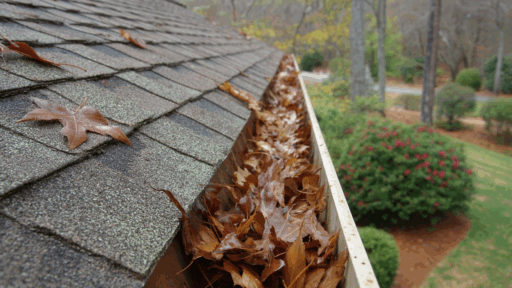Vinyl windows offer great energy efficiency and low maintenance. But let’s face it you might get tired of that standard white or beige color after a few years. Can you paint vinyl windows to match your home’s style?
I promise there’s a way to give your vinyl windows a fresh new look. You can paint them, but you need to know the right techniques and materials.
In this blog, I’ll show you exactly how to paint vinyl windows safely. You’ll learn which paints work best, proper preparation steps, and common mistakes to avoid. Plus, I’ll share when painting makes sense and when replacement might be better.
Ready to transform those boring vinyl windows? Let’s get started.
Can You Paint Vinyl Windows?
Yes, you can paint vinyl windows, but it requires careful consideration. Vinyl window frames endure constant temperature changes, UV exposure, and weather stress, making them more challenging to paint than other vinyl surfaces.
It’s important to use a lighter paint color near the original shade, avoiding dark colors that absorb heat and can warp the frames.
Also, check your manufacturer’s warranty, as most void coverage if you paint the frames unless approved vinyl-safe paints are used.
Avoid painting damaged or warped frames; repair or replacement is best in those cases. In climates with extreme temperature swings, painting risks cracking and peeling
What You Must Know Before Painting Vinyl Windows?
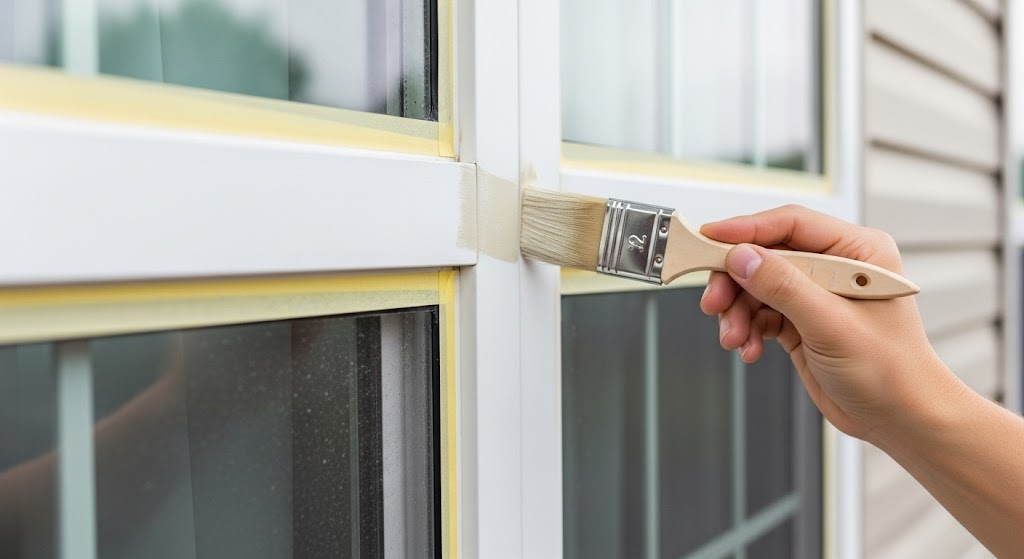
I always tell people to do their homework before buying a single can of paint. These prep steps determine whether your project succeeds or becomes a costly mistake.
- Examine Window Age, Type, and Condition: Check when your windows were installed. Newer vinyl handles paint better than older, brittle frames. Look for cracks, warping, or chalky surfaces. I won’t paint windows with structural damage since paint can’t fix underlying problems.
- Confirm Compatibility with Paint: Not all vinyl accepts paint well. Some manufacturers add substances that prevent proper paint adhesion. Test a small, hidden area first. I learned this lesson the hard way when the paint peeled off within weeks.
- Clarify Local Regulations or HOA Limitations: Your neighborhood might have color restrictions. Many HOAs require approval for exterior changes, including window colors. Check local building codes, too. I’ve seen homeowners forced to repaint because they skipped this step.
- Surface Preparation as the Foundation of Success: This step makes or breaks your project. Clean vinyl needs deglossing and priming for paint to stick correctly. I spend more time prepping than painting. Skip this, and you’ll watch your hard work peel away within months.
How to Paint Your Vinyl Windows?
After asking myself, can you paint vinyl windows successfully, I found that following a careful, step-by-step process is crucial for a durable, attractive finish.
1. Clean the Surface Thoroughly
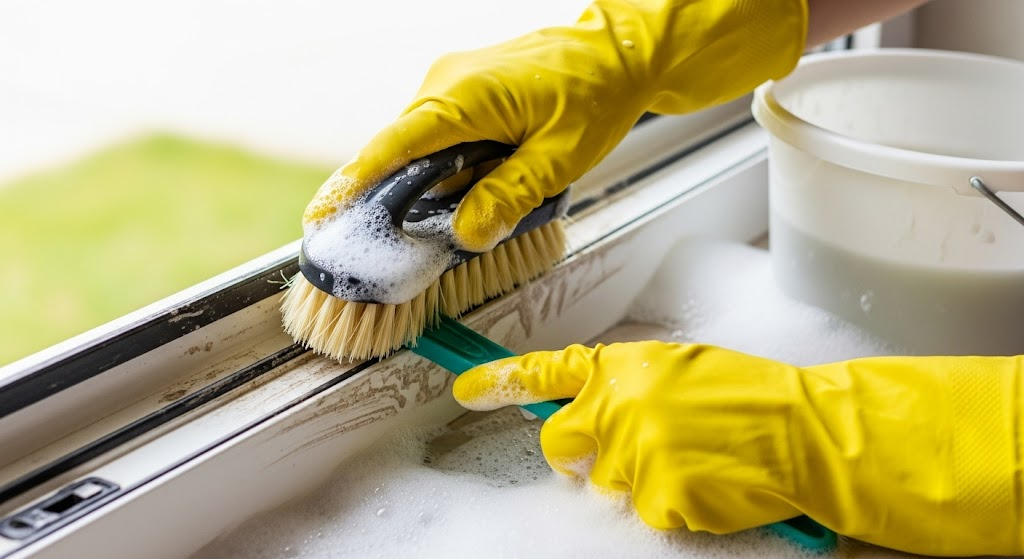
I start with a degreasing cleaner to remove dirt, grease, and mildew. TSP substitute works great for this. I scrub every inch with a soft brush, then rinse completely. Any leftover residue will prevent paint from sticking. Allow the surface to dry for at least 24 hours before proceeding.
Ensure the room is well-ventilated during cleaning to speed up the drying process and maintain air quality.
2. Lightly Sand to Promote Adhesion
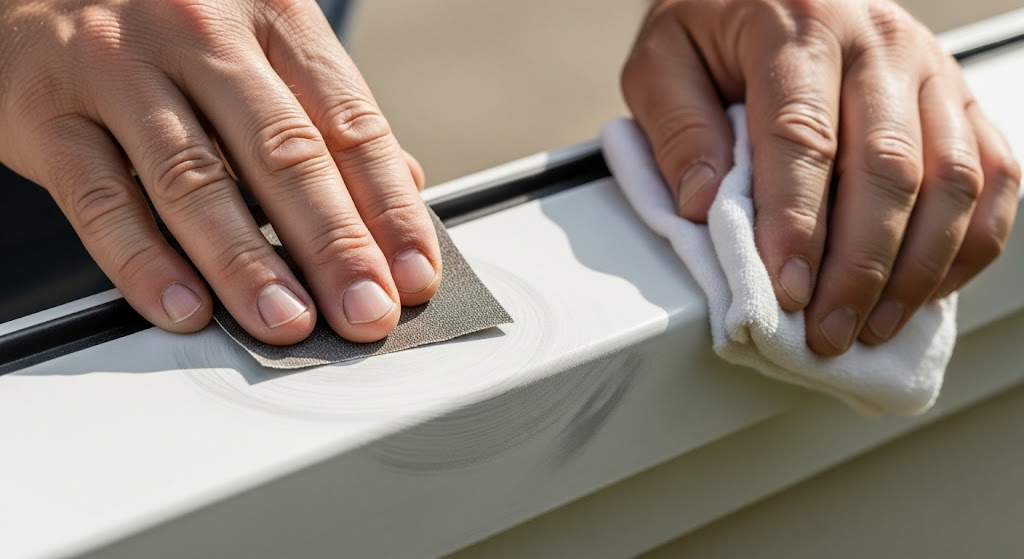
I use 220-grit sandpaper to gently scuff the vinyl surface. This isn’t about removing material, just creating tiny scratches for the primer to grab.
I sand in circular motions and wipe away all dust afterward. This step is crucial for long-lasting results. Make sure to wear a dust mask during sanding to protect your lungs and keep the workspace clean.
3. Tape Off Adjacent Areas and Apply Protective Coverings
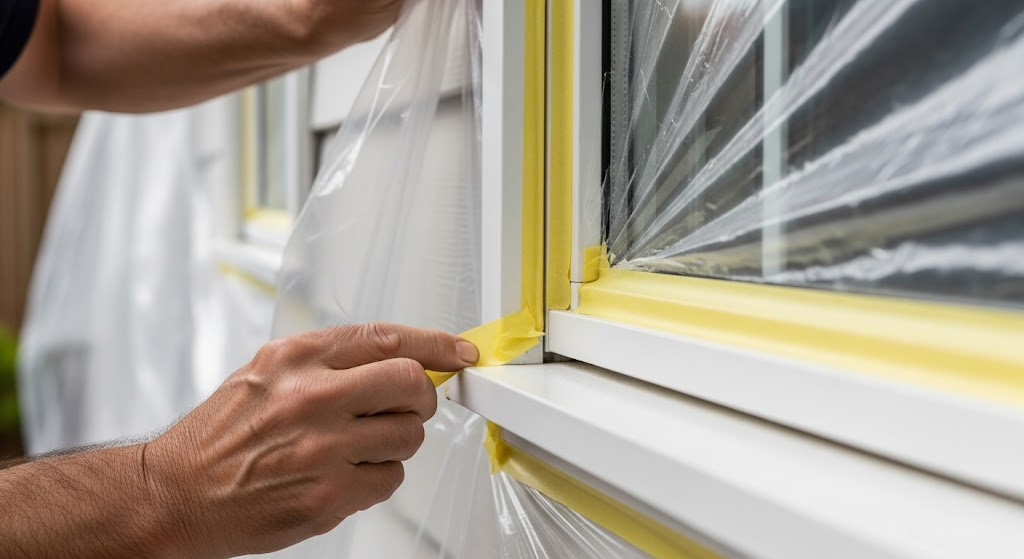
I protect glass, siding, and trim with painter’s tape and plastic sheeting. Quality tape makes a huge difference here; cheap tape bleeds or leaves residue.
I press the edges down firmly to prevent paint seepage. Remove the tape while the final coat is still slightly wet.
After this double-check that all coverings are securely taped to avoid any dust or paint splatter settling on protected surfaces.”
4. Prime the Surface Using Bonding Primer
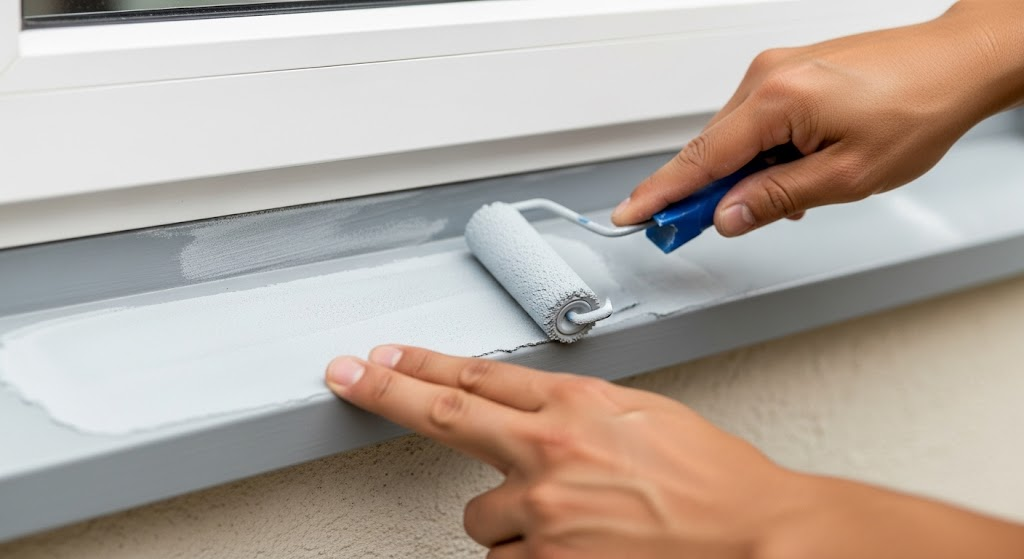
I always use a high-quality bonding primer designed for vinyl surfaces. A regular primer won’t cut it. I apply thin, even coats with a brush or small roller.
Don’t rush this step. Apply the primer in thin, even coats using a high-quality brush or small roller, ensuring complete coverage without pooling or drips for optimal adhesion and durability.”
5. Paint in Thin, Even Coats
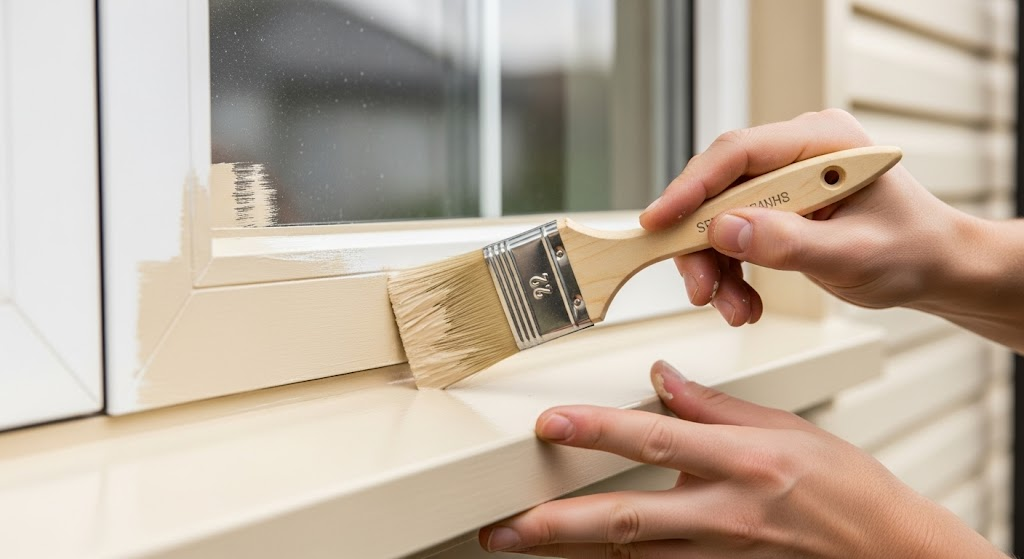
I apply 2-3 thin coats rather than one thick coat. Thick paint tends to peel on vinyl. I use a high-quality exterior acrylic latex paint in a lighter color than the original vinyl.
Each coat needs to dry completely before applying the next one.
6. Let It Cure Fully Before Reattaching Hardware
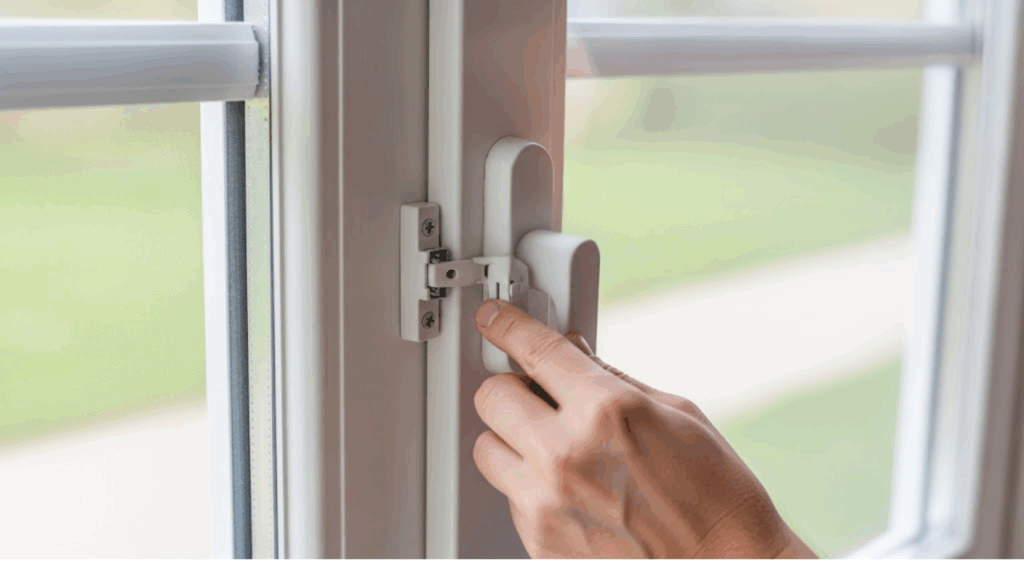
I wait at least 48 hours before reinstalling window hardware or operating the windows. Paint might feel dry, but it needs time to cure properly.
Rushing this step can damage your fresh paint job when you try to open or close the windows.
What Kind of Paint Works on Vinyl Windows?
Choosing the right paint makes the difference between a project that lasts years and one that fails within months. I’ve tested many types, and some work much better than others.
Best Paint Types for Vinyl Windows | Paints You Should Never Use |
|---|---|
| Flexes with temperature changes | Oil-based paints |
| Resists cracking and peeling | Dark colors without UV resistance |
| Cleans up easily with water | Cheap latex paints |
| Provides good UV protection | Enamel paints |
Alternative Options to Painting
Sometimes, painting isn’t the best solution for your vinyl windows. I’ve helped homeowners explore other ways to change their window appearance. Here are three options worth considering.
1. Vinyl Wraps or Window Cladding: I’ve seen great results with vinyl wraps designed for windows. They apply like large stickers and come in many colors and finishes. Professional installation costs more than paint but lasts longer and doesn’t void warranties.
2. Replacing Sashes or Ordering Custom-Colored Frames: You can replace just the window sashes instead of entire units. Some manufacturers offer custom colors when ordering new frames. This costs more upfront but gives you factory-quality results with full warranty protection.
3. Exterior Shutters or Trim Repainting for Contrast: I often suggest painting trim or adding shutters instead of touching the windows. This creates visual interest without risking window damage. You get color variety while keeping your vinyl windows in original condition and warranty intact.
Smart Tips for Long-Lasting Results
I’ve learned these tips through trial and error over the years of painting vinyl windows. Follow them, and your paint job will look great much longer.
- Time your painting between 50-85°F with low humidity, avoiding hot or rainy days to ensure proper curing.
- Test a small hidden area first and wait a week to check adhesion and durability before painting all windows.
- Use light colors with Light Reflective Values above 55 (e.g., white, cream, light gray) to prevent heat absorption and warping.
- Plan touch-ups every 3-5 years and inspect windows annually to fix chips or worn spots early.
- Clean painted windows gently with mild soap and soft cloths; avoid harsh or abrasive cleaners that damage paint.
To Conclude
So, can you paint vinyl windows? Absolutely, but it’s not right for everyone. I’ve shown you the complete process, from proper prep work to choosing the right paint types.
Painting works when you follow the rules. Use quality acrylic paint in light colors. Prep thoroughly. Accept that your warranty disappears.
But sometimes replacement makes more sense. If your windows are old, damaged, or you want dark colors, skip the paint and invest in new windows instead.
The choice is yours. Painting can give you a fresh look for less money, but only if you do it right.

